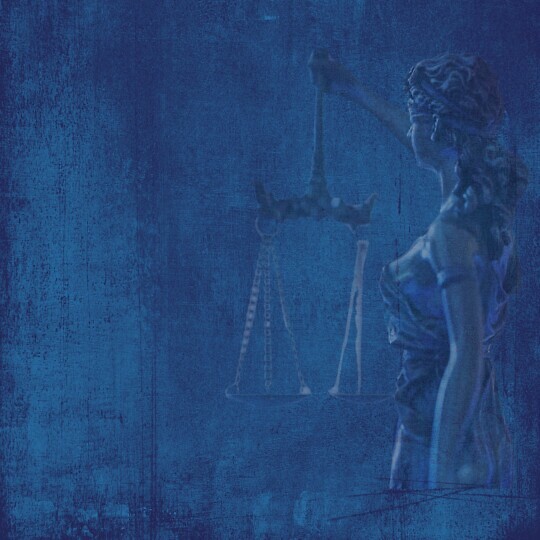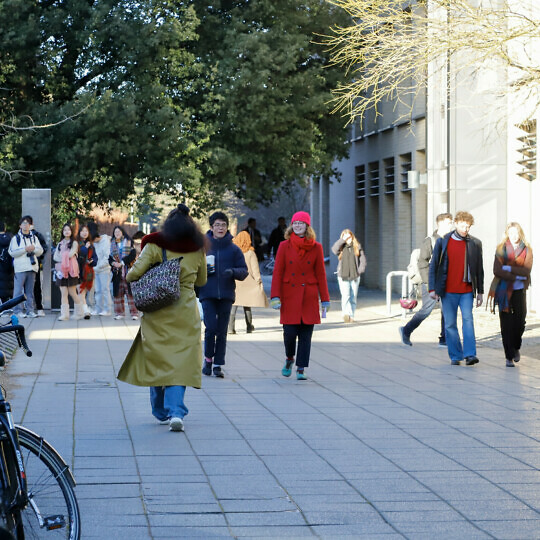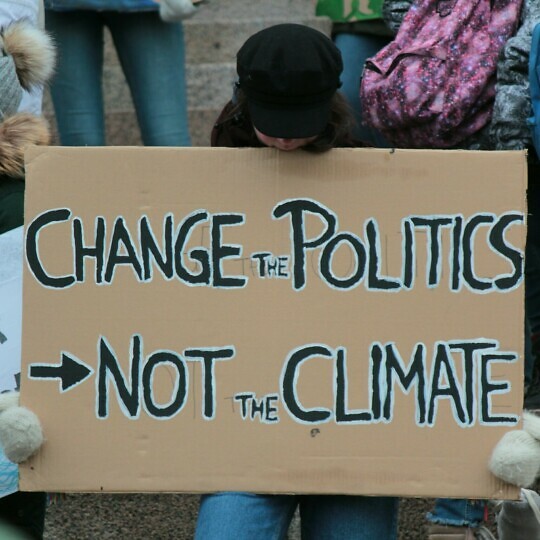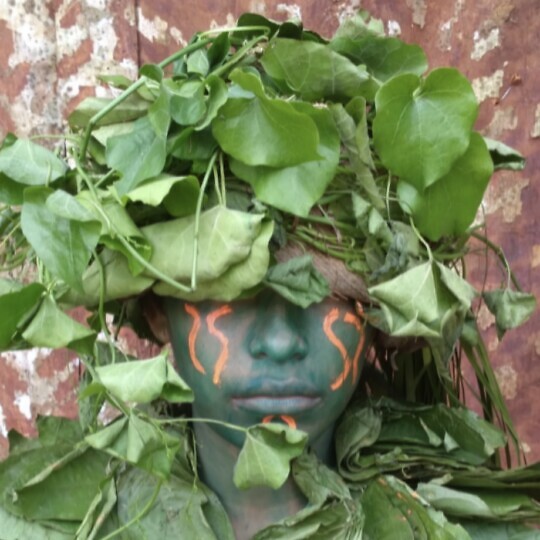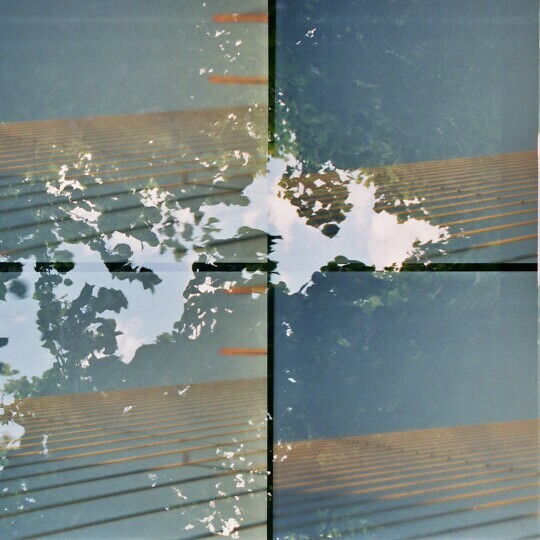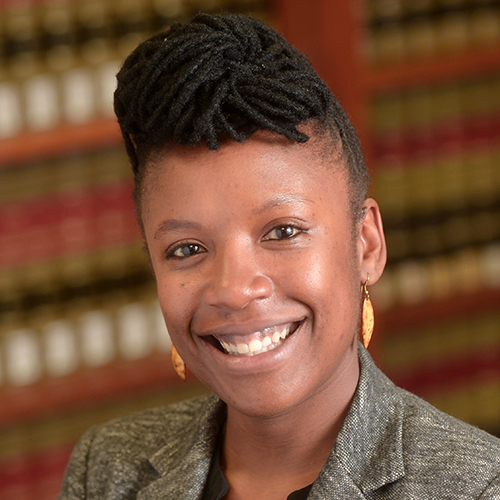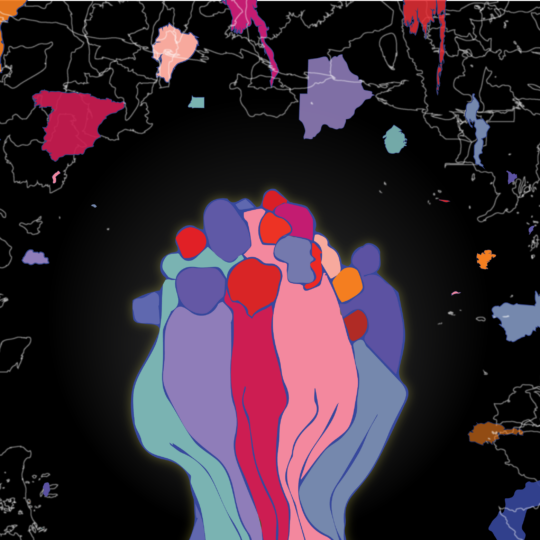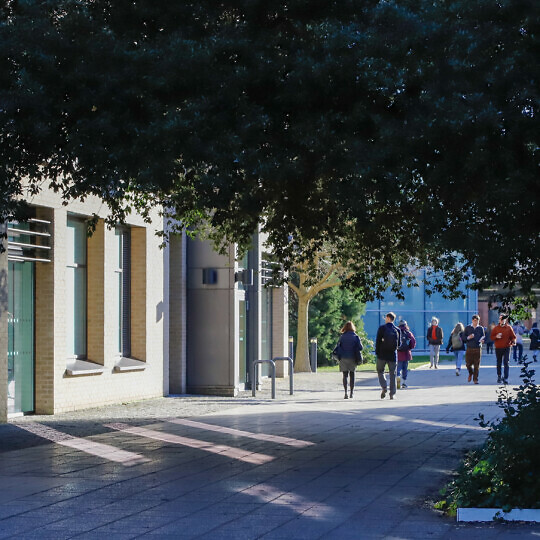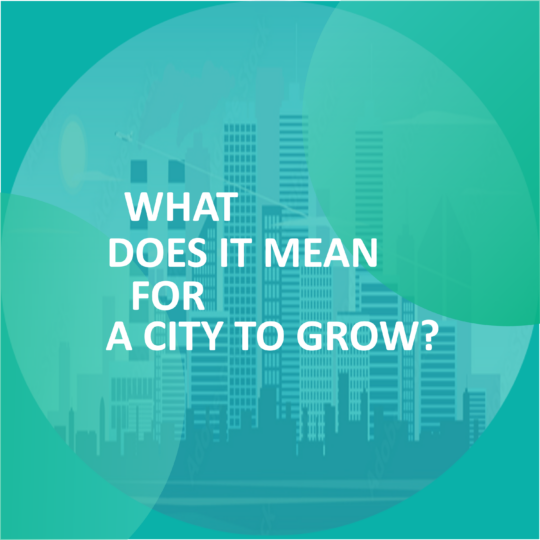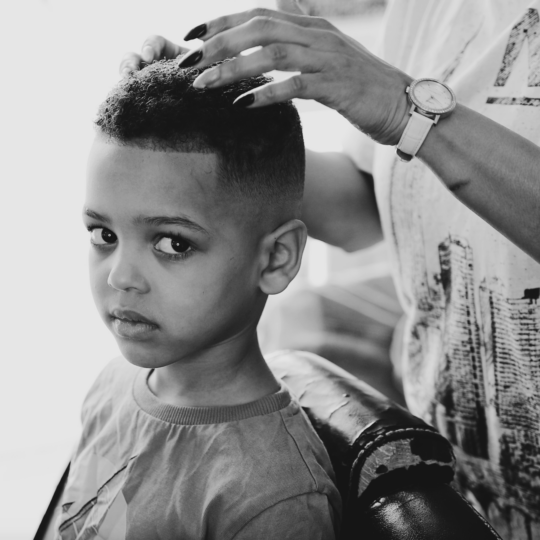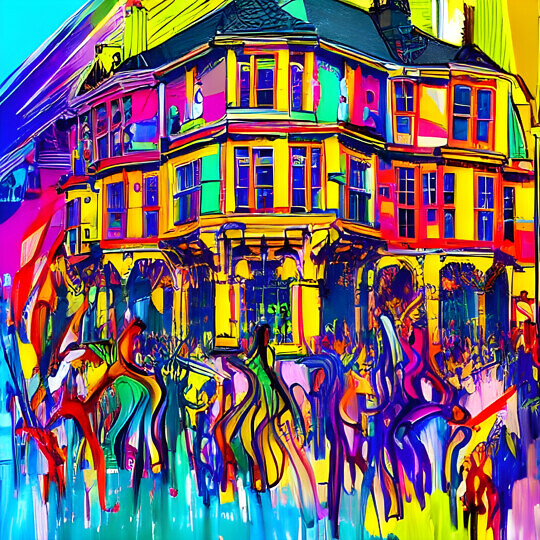| 28 Mar 2014 - 29 Mar 2014 | All day | CRASSH (SG1&2), Alison Richard Building, 7 West Road, Cambridge CB3 9DT | |
- Description
- Programme
- Abstracts
Description
Conveners
Dr Monique Ingalls (Faculty of Music)
Dr Peter Webb (Department of Sociology)
Dr David Trippett (University of Bristol)
Prof. Nicholas Cook (Faculty of Music)
Summary
Over the past two decades, digital technologies have fundamentally altered the ways that musical and audiovisual media are created, circulated and received. As musical and audiovisual content has been made available in multiple formats through a variety of media platforms, there has been a multifaceted convergence of visual and sonic media, of production and consumption, and of corporate and grassroots artistic endeavours. Creators, promoters and audiences have responded in a variety of ways to the new challenges and opportunities. And, at the same times as media industries’ adaptive strategies are shifting users’ expectations and experience of audio-visual content, participatory use is constantly stretching and testing the legal frameworks of copyright law.
The Conference ‘Creativity, Circulation and Copyright’ aims to further interdisciplinary discussion of the relationship between the aesthetics, ethics and legal implications of new digital technologies through exploring several themes relating to the ways musical and audiovisual media are created, received and interpreted in the digital age.
Invited speakers: Martin Scherzinger (New York University), John Richardson (University of Turku), Kiri Miller (Brown University), Anahid Kassabian (University of Liverpool), Lionel Bently (University of Cambridge), Ananay Aguilar (University of Cambridge).
Sponsors
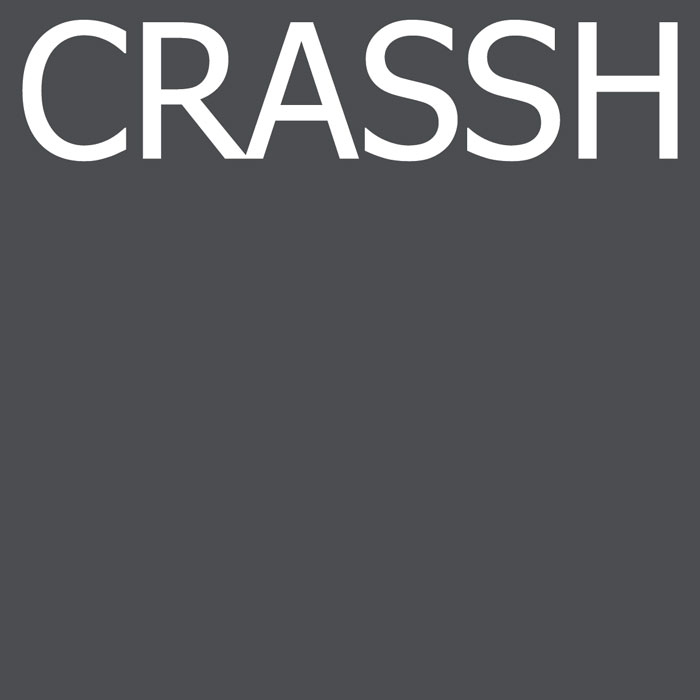
Supported by the Centre for Research in the Arts, Humanities and Social Sciences (CRASSH) and the Faculty of Music.
Accommodation for speakers selected through the call for papers and non-paper giving delegates
We are unable to arrange or book accommodation, however, the following websites may be of help.
Visit Cambridge
Cambridge Rooms
University of Cambridge accommodation listing
Lastminute.com – 5% discount (code: CAM5 – terms and conditions)
Image: adapted from a design by Christopher Dombres
Programme
| DAY 1 - 28 March 2014 * | |
| 8.45 - 9.00 | Registration |
| 9.00 - 10.30 | SESSION 1
|
| 10.30 - 11.00 | Coffee break |
| 11.00 - 12.30 | CONCURRENT PANELS 1 a. Sampling & Mashup
b. Copyright Regimes
|
| 12.30 - 13.30 | Lunch |
| 13.30 - 15.00 | SESSION 2
|
| 15.00 - 15.30 | Tea break |
| 15.30 - 17.00 | CONCURRENT PANELS 2 a. Virtual Archives: Youtube and the Cloud
b. Digital Participation
|
| 17.00 -17.15 | Short break (for equipment set-up) |
| 17.15 - 18.00 | Alan Blackwell & Sam Aaron: Take a little walk to the edge of town: A live-coded audiovisual mashup'
|
| 18.00 - 19.00 | OUP book launch:
|
| 19.00 - 21.30 | Dinner |
| DAY 2 - 29 March 2014 | |
| 9.00 - 10.30 | SESSION 3
|
| 10.30 - 11.00 | Coffee break |
| 11.00 - 12.30 | CONCURRENT PANELS 3 a. Creativity in focus
b. Mapping, mediating, and Touching
|
| 12.30 - 13.30 | Lunch |
| 13.30 - 15.00 | SESSION 4
|
| 15.00 - 15.30 | Tea break |
| 15.30 - 16.15 | SESSION 5
|
| 16.15 - 17.00 | Wrap-up discussion |
* Please note that the programme is provisional and subject to change |
Abstracts
SESSION 1
Kiri Miller (Brown University): Dance Like the Xbox is Watching
Dance Central is a digital game series that offers private dance lessons using a surveillance technology. For many players, this embedded contradiction drives the games’ appeal. Dance is a potentially humiliating activity, and dancing to club hits like no one is watching is a high-risk guilty pleasure. But what if only a machine is watching, and the club moves have been choreographed in advance? Dance Central was among the first games produced for the Microsoft Xbox Kinect, a full-body motion-sensing game interface marketed with the slogan ‘You Are the Controller’. The Kinect camera peripheral tracks the motion of 20 individual joints on a dancer’s body, evaluating the technical accuracy of a player’s performance of a routine without acknowledging the aspects of embodied identity that typically inform judgments of club dance performances (e.g., gender, race, sexuality, age, and body type). The dance routines are set to hip-hop, EDM, and pop club tracks; they mix choreographed sections with freestyle sections, asking players to alternate between dancefloor compliance and creativity. This paper investigates how the Dance Central games frame a surveillance system as a safe, private space for dance — including solo rehearsal/performance and social dance with trusted friends — and how the games’ dynamic of seeing-and-being-seen changes when players post gameplay videos online. I discuss Dance Central gameplay as a form of embodied popular music reception that intersects with other forms of popular music/video circulation, social media practice, and dispersed participatory culture.
John Richardson (University of Turku): Closer Reading of Musical Sounds in the Digital Age
In this paper I review uses and definitions of close reading in music research and bordering fields in the context of contemporary digital culture. I argue that close reading practices should be elevated in status to something resembling cross-disciplinary methods like ethnography and discourse analysis. One reason for the apparent neglect of close reading is that it is perceived as hermetic to individual arts disciplines and implicitly promoting Kantian autonomy. New humanities approaches to close reading complicate such assumptions, however, by taking into account such factors as affective response and physical as well as discursive situation. In addition, close readings in new humanities research frequently take inter-art forms as their subject matter (e.g., films, gallery installations, environmental sound art, virtual reality), which demand that the analyst attend to crossmodal exchange. Following Mieke Bal, I argue that a concept- rather than theory-based approach has the greatest potential in cultural analyses because it is more adaptable to objects of study. The notion of framing, again from Bal but also Gregory Bateson and Erving Goffman, holds considerable potential as a foundation for readings that interrogate their underlying assumptions while also “containing” all the relevant layers of an analysis. While close reading and narrative-based thinking are responses to printed media in the predigital world and essential means of accounting for experiences in deep and context-rich ways, we should nevertheless look also towards digital culture and what some have called hyper reading (James Sosnoski, N. Katherine Hayles), database thinking (Lev Manovich), and multimedia mentality (Nicholas Cook) in order to expand our ideas about cultural analysis in the present cultural climate. I argue, therefore, for a synergy of traditional and emerging approaches in order to grapple with questions relevant to current research. After Bateson and Gibson, I make a case for an ecology of close reading that, moreover, overlaps with matters of concern in ecocritical and ecomusicological research. The presentation is furnished with examples that illuminate the matters at hand.
CONCURRENT PANELS 1
a. Sampling & Mashup
Justin Morey (Leeds Metropolitan University): Examining Emerging Forms of Creative Practice among UK Sampling Composers in Response to Copyright Management
The UK Copyright, Designs & Patents Act 1988 provides no rules for determining whether using a phonographic sample in a new recorded work may be infringement of copyright, beyond requiring examination of whether its use is either qualitatively and/or quantitatively substantial. Additionally, the relevant cases that have gone to the UK courts have not resulted in any significant legal precedent that could help to inform those producers using samples, or the sample clearance industry, where the line may be drawn in terms of infringement.
Using qualitative data from interviews with sample-based dance music producers (hereafter sampling composers) and sample clearance specialists, it will be argued that the UK music industry has adopted an approach to sample clearance, in the wake of the judgement in the US case of Bridgeport Music, Inc. v Dimension Films (2004), that considers it not to be permissible to use a sample of any part of a copyrighted recording in a new recording, without seeking clearance.
An examination of current industrial practice in managing sample clearance will lead to discussion of how certain creative practices have become increasingly prevalent in UK dance music, such as the use ofsample recreation specialists, and the approaches adopted by sampling composers to maintain a sampling aesthetic in their work without using phonographic samples.
Frédéric Döhl (Freie Universität Berlin): A Question of Context and Aura. About Copyright Laws Reaction to Digital Composing with Second Hand Sounds – with Special Regard to Mashup
Particularly due to widely acknowledged, theorized, and studied technological (pc, sam- plers, internet) and aesthetical (postmodernism, retromania) changes, the use of well- established practices of employing a musical reference has grown exponentially across the board from avant-garde music and jazz to all kinds of popular music genres during the last four decades. But has the massive quantitative change mutated in any respect to a qualitative change, too, bringing anything new to the wide and old field of musicalborrowing (Burkholder, 1994; Schneider, 2004) with regard to both the production pro- cedures and/or the reception and evaluation of these kinds of music?
At least German copyright law1 has – in opposition to US copyright law2 – recently recognized thisdevelopment in matters of sampling for its ability to create new from old, but stated immediately an intriguing exception of this newly opened up case of fair use: you are not allowed to sample if an »average producers« will be able to produce the sampled sound on his own. This is the classic objection against musical borrowing as an act of laziness and creative inability becoming copyright law.
This paper deals with mashup as a case example, a genre of popular music (McGranahan, 2010; Sinnreich, 2010) which is totally based on large-scale sampling. In referring to its classic work, the Grey Album (2004) – a mashup of Jay-Z’s Black Album and The Beatles’ White Album –, and its story, this paper not only strives to exemplify how the ability to draw upon specific sounds changed by digitalization (Metzer, 2003) is
fundamental to the aesthetic of mashup but to show how this ability indeed brought some qualitative changes (opposing Reynolds, 2011) towards not just performance quo- tation (Katz, 2010) but the creation of a virtual shared performance by art- ists/ensembles who in reality did not perform together, exemplifying how the men- tioned exception for fair use misunderstands how important the fact is for the experi- ence of such music based on sampling that the sounds you hear are actually produced by specific artists/ensembles and not by anybody, even if it would sound the same: the difference is a question of context and aura (Danto, 1964; Latour, 2011). With these ar- guments the current »average-producers«-jurisdiction will be explained and critically dis- cussed.
Bernd Justin Jütte (University of Luxemboug): The EU’s Trouble with Mashups -‐ From Disabling to Enabling a Digital Art Form
New tools for editing of digital images, music and films have opened up new possibilities to enable wider circles of society to engage in ’artistic’ activities of different qualities. User generated content (UGC), a term that already transmits a notion of amateur artists, has produced a plethora of new forms of artistic expression. One type of UGC are mashups, which are compositions that combine existing works (often) protected by copyright, and transform them into new original creations.
The European legislative framework has not yet reacted to the copyright problems provoked by mashups. Whereas the flexible US fair use doctrine has ac-‐ commodated mashups rather easily, the strict corset of limitations and exceptions in Art 5 (2)-‐(3) of the InfoSoc Directive does not leave any, or only very little, room for this innovative and widely popular form of artistic expression for commercial or non-commercial purposes. The paper analyzes the current European legal framework and identifies its insufficiencies with regard to enabling a legal mashup culture. By comparison with the US approach, an attempt is made to suggest solutions for the European legislator, based on the policy proposals of the EU Commission’s “Digital Agenda” and more recent policy documents (e.g. “On Content in the Digital Market”, “Licenses for Europe”). In this context a dis-‐ tinction is made between non-‐commercial mashup artists and the emerging commercial mashup scene.
b. Copyright Regimes
Keith Negus / John Street / Adam Behr: Digitisation and the Politics of Copying in Popular Music Culture
Musicians are at the forefront of discussions around revenue loss in the music industry, yet often neglected in existing studies which usually focus on corporate perspectives or audience activities. Drawing on extensive interviews with musicians operating in different genres – and at different points in their careers – within the broad field of popular music this paper presents initial observations from an investigation of how the notion of ‘original’ ideas and rights of access (and hence copyright) are negotiated by practicing musicians. How do they regard duplicating without permission in order to circulate free copies or bootlegs? How do they see the practice of appropriating, reusing, sampling and imitating? How does this relate to the existing legal and policy framework?
With an ever-wider range of technical possibilities blurring the boundaries between production and distribution – sampling, remixing and ‘mash-ups’ – the legal mechanisms for protecting musical creativity have fallen behind both the practical means by which copyright can be breached and, crucially, the conceptual framework within which many practitioners now operate. At the same time, copying of various forms has long been intrinsic to the processes of both making music and learning how to do so. This paper begins to unpick the ways in which musicians regard different types of copying and how they feed into musical meaning, ideas of ‘fair use’ (legal and moral), attendant concepts of musical ownership and the distinctions between ‘originality’, ‘imitation’ ‘creativity’ and ‘innovation’.
Emmanuel Nnamani (University of Cambridge): ‘Better in the Open than in the Barn’? – Perspectives on Creativity, Copyright Protection and the Music Industry in Contemporary Nigeria
Musical creativity might be said to involve various aspects of the music-making process from conceptualization to consumption. However, while the present-day globalization of copyright regulations might be said to be a panacea necessitated by the nature and demands of the creation and consumption processes, the degree of the operational success of the regulations seems to highlight the underlying disconnect between the laws on one hand and the consumption process on the other. In Nigeria, this disconnect bedeviled the operationalization of the country’s copyright laws from the onset and has continued to negate its relevance and viability. The much-needed redress has received very scanty scholarly attention and poor results, the present boom in her home video industry notwithstanding.
This paper examines the problems of musical creation in the Nigerian music industry vis-à-vis the content and operationalization of the nation’s copyright regulations. The discussion shows that the cynicism and skepticism that greeted these regulations at the onset might have been unrecognized or ignored by the operators. This scenario has rapidly-grown tentacles that continue to worsen with potential dire consequences for the music industry and the nation especially with the spate of developments in today’s digital-oriented world order. New media and digital networked technologies can be both beneficial for musical creativity and copyright-friendly where the potentials are properly managed. The prevailing redundancies and lack of currency in the copyright regulations constitute a bane for music creativity and only an overhaul will make them viable for the growth of the music industry in Nigeria.
Dave Laing / John Street: Copyright, Collective Management Organisations and Cultural Diversity in the Single European Digital Music Market
Copyright is never simply good for creativity or harmful to it. Much turns on where and how the relationship is managed and who controls it. In many territories, the national Collective Management Organisation (CMO – aka authors collection society), charged with collecting and distributing the revenue deriving from copyright, plays a pivotal role in moulding the creativity/copyright nexus. To varying degrees, CMOs are required by law to remedy or prevent market failure by subsidising or otherwise supporting cultural diversity, or else they choose to do so. Our paper draws on research conducted as part of the RCUK CREATe programme. It begins by exploring the regulatory regimes for music CMOs in the European Union and the differences in their obligations to promote creativity, either by supporting national or minority musics or by assisting fledgling composers and SME start-ups in the music industry. It then considers the examples of French CMO SACEM and the UK’s PRS for Music, focusing on the outcomes of their contrasting visions of cultural diversity, including the recent secession of Welsh-language authors and publishers from PRS. Finally, the paper discusses how the aim of protecting cultural diversity will be affected by the changes being driven by the European Commission to establish a transnational regulatory regime for CMOs in order to meet the challenges of the digital music economy and the new players (e.g. Spotify and Deezer) within it.
SESSION 2
Lionel Bently (University of Cambridge): De-naturalizing Musical Authorship
Determinations of who counts as an ‘author’ of a musical work has a number of legal consequences. Most obviously, it governs who count as the first owners of copyright, and thus who benefits from revenue streams associated with publishing/ recording (mechanicals) and performance (including broadcasting and streaming). Secondly, it is relevant to the duration of copyright – the term of copyright in music and lyrics being calculated by reference (i.e. currently seventy years after) the death of the author (or in the case of co-authorship the last author to die). Third, being an author entitles a person to be named as such when a work is published or recordings are distributed: authors are granted what is known as the ‘moral right’ of attribution.
Copyright law has tended to assume that the legal concept of authorship maps onto a natural, flesh-and-blood, human beings. It thus is typically taken for granted that identifying who is an author for one purpose (say, ownership) necessarily operates to identify the author for other purposes (term, attribution). In so doing, the dominant arena for determining authorship concerns ownership. Here the rules have developed rather restrictively, so as to exclude from the category of authors a perhaps surprising range of contributions (as seen most clearly in the Spandau Ballet case, Hadley v Kemp). But the effect of such an approach is not just to exclude contributors from counting as owners, but also from being entitled to attribution.
Certainly, one can see the logic in assuming that the word ‘author’ means the same thing in different parts of a statute, and indeed the convenience in so doing. However, if we consider the legal task of ascribing authorship as informed by matters of policy, the assumed unity or integrity of ‘authorship’ in copyright seems problematic. The policy considerations that underpin restricting who counts as an author in the three domains – ownership, term and attribution – are very different. By exploring these policies in more detail, I want to suggest that copyright law could respond more flexibly to a diverse range of creative practices if it recognised that the legal concept of authorship is not ‘natural’. One consequence of so doing might at least to be to afford rights of attribution to a wider array of contributors than are currently accommodated by the moral right of attribution.
Ananay Aguilar (University of Cambridge): The Value of Performance in Law: Performers’ Rights and Creativity
British copyright law has been criticised for privileging musical elements and practices that have been important in the conceptualisation of classical music, above those which have developed independently of that tradition. This conceptualisation has been associated with classical music’s aesthetic concept of the artwork: both law and the artwork treat composition as the culmination of creative genius, while performance is attributed little or no creative status. This asymmetry is further complicated by the domination of capital over labour in the protection of sound recordings, as copyright law vests authorship in the company that bears the costs of making and issuing the recording: performers are denied authorship over the record of their own performance. While the 1988 Copyright, Designs, and Patents Act introduced rights in performance, the depth and breadth of legal protection for performance-based musical practices, like most popular musics, remain limited. To overcome this asymmetry, commentators have focussed on how the concept of authorship might be extended to embrace collaborative practices that fall outside of the practices of classical music. My current project explores an alternative approach that places performers’ rights at the centre of the discussion. In this presentation I will attend to relevant case law to outline two main issues: firstly, the separation of creativity between composition and performance implied by these rights and, secondly, their relation to recent technological developments.
CONCURRENT PANELS 2
a. Virtual Archives: Youtube and the Cloud
Daniel Gouly (SOAS): Soundcloud Users: an Ethnography
Being disembodied from those day-to-day activities that have long created community cohesion and powered the process of enculturation means that online community formation differs from its offline counterpart, as rather than a shared physical existence, websites such as Soundcloud provide “access to sustained communication, informational resources, and most important, a common locus for members to gather” (Lysloff 2003b: 256). These relationships scale up into networks “held together through the mutual production and reciprocal exchange of knowledge” (Jenkins 2006: 137). Soundcloud is such a network, a place in which users discuss musical knowledge, collaborate on musical ventures, and by the sharing of compositions involve themselves in collective musical exploration. Although Soundcloud’s role in many users’ lives is significant, with almost all producers I communicated with using it on a daily basis, one should be careful to note that “connection does not necessarily lead to the development of community, and gathering in an online place is not automatically followed by the formation of social bonds” (Kibby 2000: 95). This research seeks to evaluate Kibby’s statement in the case Soundcloud and discover whether the actions of these users are driven commercially by the desire for promotion or constituted a community, helping other users towards shared goals and desires. Although much has been written regarding the theory of the Internet as heralding a revolution in communication, there is still work to be done exploring the nature of lived experience online. Here ethnographic research such as mine can play an important role, expanding on the work of Abigail Wood (2008), René Lysloff (2003a, 2003b) and Andrew Whelan (2006), to explore the relationship between online and offline experience, the process of online community creation, and the tension between self-promotion and community endeavour focusing on a group of Hip-Hop musicians on the website Soundcloud.
Approaching this piece of research I was fairly critical of the idea that Soundcloud constituted a community, however I would argue that my findings dispute this preconception. Without speaking to users, one might observe an endless stream of tracks and comments that could be interpreted either as communal action or self-promotion. Even the connections between users created by hyperlinks on users’ homepages and the formations of online ‘crews’, does not necessarily demonstrate much beyond the ‘connections’ that Kibby critiques. However, discussions with users lead to many surprises as I discovered experiences of Soundcloud that contrasted greatly with my own. Virtually all correspondents revealed that they had met Soundcloud users offline, and those that hadn’t were keen to, others were in the process of building communities offline, either by meeting other users in their local area and making music together or organizing concerts granting users the opportunity to perform live. Users are also coming together to create independent labels and crews to help promote their music as a collective, using tools like Twitter and Bandcamp. This combination of high levels of online communication, and an ongoing process of organization offline initiate a move from ‘connections’ to the ‘formation of social bonds’ and the building of friendships (Lysloff 2003: 243).
Maarten Michielse (Maastricht University): Networking Songs – Participatory Cover Practices on YouTube
On YouTube it has become common practice for music audiences and amateur musicians to collectively ‘pool’ around popular songs by producing remixes, cover songs, and mashups. While such pooling practices are often framed within theories of viral media and memes (Brodie 2009 [1996]; Burgess 2008; Dawkins 2006 [1976]; Jenkins et al. 2013; Shifman 2012), this paper argues that these frameworks are only helpful to the extent that they are able to point at the importance of creative networking and the production of a shared musical experience. In other aspects, however, these theories tend to overlook broader contexts of cultural participation and learning of which these practices are also part (see also Miller 2012). Based on eighteen months of (virtual) ethnographic research (Heine 2000) within multiple networks of cover-enthusiasts on YouTube, this paper shows how music audiences and amateur musicians, by strategically pooling around popular songs, not only remediate and reshape older forms of phonographic-oral practices (Toynbee 2006), but also consciously and deliberately challenge existing boundaries between the private and the public, the individual and the collective, the amateur and the professional, and the practices of rehearsing, performing, and consuming contemporary popular music.
Héctor Fouce (Universidad Complutense de Madrid): Bedroom Stars. An inquiry on “Su Morenito 19” Viral Success and the Exploitation of its Copyright
Although nearly nobody knows his real name, Norman Vivas videos have been seen by more than 2 million people. In 2012 three out of ten most watched videos in Spain through YouTube had been produced by Norman. He composed the songs and recorded the videos that satirize aesthetics, sounds and ways of speaking of most urban subcultures. A Twitter account alien to him but attributed to “Su Morenito 19”, his most famous character, get 200,000 followers: Vivas seemed not to be interested in controlling the use of their characters but that account is now suspended.
It is possible to imagine such significance before the digital era? How the success of visits is capitalized in monetary terms? Can this kind of practice be described as underground or alternative? How can an artist control the intellectual property of a work or a character in a digital environment when working from outside the industry? How come these videos to reach this immense amount of visits? This communication deals with the study of the aesthetic and legal aspects of the viral videos using Norman Vivas as a case study. I will use a qualitative methodology based on audiences (focus groups of discussion with users, interviews with producers and mediators); the goal is to show the complexities of the interrelations between the creative and the communicative environment and economic and legal issues.
b. Digital Participation
Mark Thorley (Conventry University): Participatory music culture: the challenges for identity, creativity and recognition
The advent of recording technology served to break down the link between musician and audience (Eisenberg 2005), and the music participant became the music consumer. Emerging digital technologies are now reversing this trend and music participation is all the more possible. Though the environment for recorded music continues to experience significant threat, the environment for music participation now thrives in ways not previously imaginable.
Much of this new participation is enabled technologically, and its likely impact has received attention. For example, the concept of the ‘Prosumer’ was originally established by Toffler (1980) and participation culture has been examined by Jenkins (2006). Additionally, the potential of networks is considered by Benkler (2006), and the concept of peer-production by Tapscott and Williams (2006). As the opportunities for the music creative expand, and the role of the music consumer shifts to participant, key questions emerge as to how this change challenges established roles.
Drawing on concepts outlined in a chapter in ‘Music and Virtuality’ published by Oxford University Press, this paper focuses on key impacts on the Producer and Fan. For example, in adopting Crowdfunding, how does the shift challenge the music producer? For the fan, what does engaging with the funding of projects do for their identity and recognition within the process?
Justin Williams / Ross Wilson (Bristol University): Music and Crowdfunded Websites: Digital Patronage and Artist-Fan Interactivity
This chapter investigates the economics of virtual bands—funding strategies and business frameworks that reflect virtual music business cultures in the Web 2.0 landscape. Most pertinent is the recent trend of fan-funded projects, also known as “crowdfunding” or “micro-patronage,” of which sites like Kickstarter, Pledgemusic, Sellaband and Rockethub provide a successful model. After an overview of terminology and online funding methods, the chapter focuses on three case studies that demonstrate the different ways groups and artists use crowdfunding for their projects: jazz orchestra composer Maria Schneider (on ArtistShare), canonical hip-hop group Public Enemy (on Sellaband) and singer-songwriter Amanda F. Palmer (on Kickstarter). The case studies raise important questions surrounding genre and ideology, new conditions of the digital music industry, artist-fan interactivity and the role of the internet in facilitating spaces for musical creativity and communication.
Sam Bennett (Australian National University): Virtual Remixing: Competition, Creative Commons and Copyright
In the last decade, remixing practice has changed from a niche, often concealed, highly specialised skill, into a marketing tool, promotional opportunity and point of focus for online music technology communities. This paper critically analyses examples drawn from 3 identifiable categories of online remix site:
– Creative commons sites such as ‘ccMixter’ offer users unlimited access to royalty free sample sets for remixing;
– Online remix competition hosting sites, such as ‘Indaba music’, host official remix competitions, often with prize incentives; and
– Stem remixing ‘events’ organised by individual commercial recording artists.
Yet such practice presents a dichotomy: on the one hand, remix competitions and creative commons sites allow users access into previously unheard multi track recordings, exposing both the performance and production aspects of composite parts of an original multi track recording. Prior knowledge or remixing ability is not a prerequisite and remixing events are open to anyone, anywhere, with a computer and DAW. On the other hand, commercial recording artists launching remix competitions and ‘events’ ensure full creative and copyright control by: creating instrument and vocal stems with their original effects processing in tact; limiting what the user hears either by song choice or stem formulation; ensuring only professional remix engineers are employed for commercially released remixes; and, retaining copyrights on all adaptations of the original work. Building on research published in The Oxford Handbook on Music & Virtuality, this paper evaluates the benefits and limitations of online stem remixing from the perspective of recording artist, hosting site and online remixer.
SESSION 3
Martin Scherzinger (New York University): Authors or Commons? Neither, but Both!
The reach of private property rights, it seems, is widening. Over the last two decades, scholars in a variety of disciplines have tackled the impact of IP law on practices of politics, science, economics, law and culture. Not only has IP been extended to new information objects (from databases and software designs to biological seed lines, bacteria, genetically engineered life forms and DNA sequences), but the lengths of time for which protection is granted have been substantially extended for nearly all objects. At the same time, we witness today an outpouring of academic and popular scholarship in critical response to the widening reach of the IP concept. Like an evil twin, the progressive IP and cyberlaw scholarship calls for an expansion of the commons, emphasizes the productive delinking of cultural practice from cultural policy, and offers countervailing forces to the enclosure of the commons. Instead of identifying the expanding commons as inherently progressive, this paper argues that the peculiar comingling of the commons with its privatized antithesis productively underwrites new networks of exchange value. It is the opportunistic conceptual mélange between private property and public domain – whereby one side of the conceptual pole readily supplements (as alibi) for the other – that prevents the proper functioning of either conceptual principle in practice. Not property alone, but the very opposition between property and commons becomes the bastard concept for power. The paper describes contemporary cases of proprietary interests vested in anti-property as a paradoxical capitalist expansion of the laboring commons.
Peter Webb (Cambridge): The Future of Remix Culture and Creativity in the Music Industry
Lawrence Lessig set out to chart the hope and promise of the Internet in `The Future of Ideas’ where he discussed different contexts for understanding the Internet as a `commons’ where many `free’ resources are able to enhance and develop creativity and innovation. These are contrasted to the `real space’ places affected by the online environment where creative activity takes place and the problem of further entrenchment of copyright laws to restrict the creative process and possibilities offered by the net. In further works `Free Culture’ and `Remix’ Lessig promotes and celebrates the idea of the re-use, adapting, resituating and contextualizing work to produce new ideas, culture and, of course, music. Using this starting point and contextualizing and contrasting this work with Toffler’s (1980) and Ritzer’s (2010) versions of the `prosumer’, Lull’s emphasis on the central importance of creative `human expression’, Castells (2001,2006) `Network society’ and Boyd’s (2011) `Networked publics’ This paper assesses these Sociological frameworks for their ability to illuminate and present us with tools to understand the processes of reintermediation, disintermediation and reorganization of the music industry and its creative networks. It also looks at the impact on the perceived structures and organization of the industry that various theorists have outlined (e.g. Dolata, 2012) and provides a critique of these positions around their lack of attention on the independent sector, music production techniques and the role of the musician (Katz, 2005)
CONCURRENT PANELS 3
a. Creativity in focus
Mark Summers (Sheffield University): Human-Machine Creative Collaboration and Copyright: Improvising with Interactive Music Systems
Copyright can be problematic in areas unforeseen by legislators. One such area is that of interactive music systems which combine an improvising instrumentalist with live electronics to create a collaborative performance. The capabilities of such systems are as varied as the number of systems that have been created. These range in a continuum from the instrument paradigm, where an acoustic instrument is extended electronically (for example, MIT’s Hyperinstruments), to the player paradigm, where the system provides an improvising partner that feeds off the instrumental improvisation but is independent of it (Lewis’s Voyager or IRCAM’s OMax).
This paper will discuss these systems and their performance, raising questions about works (in the improvised input, in the output of the system, the mixed output of system and improviser or even in the system itself?) and authorship (is the improviser performing or creating, is the creator of the system the author of its output, are the creator and improviser co-authors of the mixed output?). In the light of these questions and based on legislation and case law, suggestions will be made as to where copyright may subsist and who might own it.
Joe Bennett (Bath Spa University): Who Writes the Songs? Creative Practice and Intellectual Property in Popular Music’s Digital Production Chain
In music, two objects can be owned – the composition (sometimes including a lyric as a ‘literary work’), and the sound recording. The separation of song and recording is the basis on which the music industry distributes monies, but equitable IP distribution becomes more difficult when creative individuals’ contributions (of melody, lyric, arrangement, performance or production) overlap or are non-‐linearly created. In the 1960s it became increasingly common for performers to write their own songs; from the 1980s, democratisation of recording technologies gave songwriters and performers the opportunity to self-‐produce; and by the early 21st century most digital home studios had more production power than the world’s leading studios had enjoyed only 30 years earlier. 1 These changes in creative context mean that songwriters no longer need to notate their work as they did in the early 20th century; production, lyric, melodic, arrangement and performance elements can be created, edited and adapted at any stage of the creative process. Non-‐linear creative practice in song production has implications for ownership and copyright that may challenge the historical privileging of melody & lyric in popular music’s legal hierarchy. 2 This paper will provide examples of creative practice, and discuss the legal, musicological and ethical questions that 21st century song production presents for the music industry and for future music creators.
Isabella van Elferen (Kingston University London): Ludomusicology and The New Drastic
This paper proposes a New Drastic Musicology based on the ludomusical premises of play, multimediality, and interactivity. Ludomusicology offers the exciting perspective of going beyond even the pioneering historical and technological overviews, case studies, and explorations of genre conventions that the study of game music has produced over the last decade. It necessitates innovations in three levels: (1) musical analysis, (2) musicological research themes and (3) musicological critical theory.
Ludomusicology revolutionises the score analysis that musicologists have employed since the late nineteenth century. Since the concept of a score is obsolete in game music, ludomusicology must, rather, analyse the factors cooperating in the musical underlining of game plot and gameplay. I identify these as musical affect (connotation and identification), musical literacy (habituated signification), and musical interaction (play).
The integration of these three factors into musical analysis leads to the genesis of entirely new musicological research fields. How does musical literacy in games relate to that in other multimedial genres? How does musical play in games relate to music-historical notions of play and performance?
These new research questions, finally, evoke meta-critical reflections. Ludomusicology, with its pervasive attention to multimedial and interactive performativity, necessitates a rethinking of Abbate’s notion of “drastic” musicology.
Ludomusicology can alter an entire discipline. Innovating the discipline on the levels of object analysis, research themes as well as critical reflection, ludomusicology can engender “The New Drastic”.
b. Mapping, mediating, and Touching
Joe Cantrell (University of California, San Diego): Limited Edition: Valuing Artisanal Physicality in the Digital Age
This paper examines the way in which the benefits of digital media have contributed to an increased cultural value of physical formats in specific music performance subcultures. Music as a cultural practice relies not only on aural content, but a shared visual and physical sensibility as well. The ephemeral, ubiquitous nature of digital media has created a cultural demand for physicality, specifically the tendency for physical audio formats to act as cultural fetish objects in specific genres of music production. In these instances, the visual and tangible aspects of obsolete formats such as LPs and cassettes are imbued with the power to act as cultural markers of membership boundaries as well as shared aesthetic sensibilities. This strategic and deliberate rejection of the digital reframes the valuation of media from one exclusively centered around access to the recorded sound itself, to a representation of cultural capital through the association of other physically manifested artistic practices. The placement of these rarified sonic artifacts in visually elaborate, often hand-numbered limited edition artisanal packages draws other forms of authenticity to bear to further the presumption of legitimacy to local musicians and the artistic communities they serve. The rarity and permanence of the sound recording as a physical object and unique work of handcrafted art is further empowered by the transitory nature of the digital formats it rejects. Using personal interviews and analysis, this text explores the manner in which the positioning of digital media against physical formats is enacted in the Noise and Experimental musical sub-genres of Southern California and the greater United States.
Paula Harper (Columbia University): Beyoncé’s Body: Hashing Out a Mediated Pop Live
In January and February of 2013, pop superstar Beyoncé Knowles delivered a series of performances that sparked heated debate around a persistently contentious concept: liveness. Beyoncé’s lip-synched performance of the American national anthem at President Barack Obama’s second inauguration was widely decried by fans as a hoax, even a betrayal. A second performance of the national anthem a few weeks later was popularly construed as an apologia. Finally, Beyoncé’s subsequent performance at the Super Bowl XLVII halftime show received wide critical acclaim as a redemption of “liveness.” To varying degrees, however, all of these performances–and the critical responses to them–were mediated, through a variety of media formats, platforms, screens, and social practices.
Scholars like Philip Auslander, Tara McPherson, and Paul Sanden have worked to theorize the paradox of modern mediated liveness; I draw on their work in considering how contemporary media interactions enable particular kinds of critical, participatory “live” encounters with mediated pop performances. The above performances and their reception in journalistic and social media circulation illuminate current tensions between standard music industry practices, modern media consumption, and imaginings of liveness. Contemporary consumers of mainstream pop culture interact–with pop culture phenomena and with each other–in great part through feed-based social media platforms. This mode of engagement engenders a shift in the constitution of a successful or authentic live performance; successful “liveness” depends not on geographic or even temporal immediacy, but instead on evidence of bodily processes of work, balanced tensely against against established expectations of studio-engineered vocal performance.
Ely Rosenblum (University of Cambridge): Sociality, Cybercartography and Electroacoustic Composition in Udo Noll’s Radio Aporee
With the recent availability of open source application programming interfaces for digital mapping, programmers and users have been able create applications that literally put music and sound on the map. Since the mid-‐2000s, sound artists, electroacoustic composers and archivists have been able to use digital resources to map their field recordings. Many of these maps allow for users to upload their own recordings, creating maps with thousands of sound clips.
This presentation provides the reader with a brief history of the sound map, ending with Radio Aporee, a sound map that works in conjunction with Archive.org, that invites users to both navigate and contribute to the mapping project. Further, this presentation explores the possibility of a musicological scholarship concerning analog and digital sound mapping practices, including the development of virtual worlds for computers, tablets and smartphones. It is proposed that the practice of sound mapping comes from a desire to establish discourses surrounding particular histories of listening, accomplished through the user’s shift between “the global view of the stranger” (Novak 2013:68) and the privileged perspective of the local, domestic listener (Ford 2011).
SESSION 4
Anahid Kassabian (University of Liverpool): ‘Where does it go?!? YouTube, Stupid Games, and Time’
In this paper, I will begin to theorise how small units of culture, such as the run-of-the-mill 3-5 minute uploaded video (which is suspiciously like the ‘required’ length of a pop song) or the ‘stupid game’ (Anderson, 2012), seem to swallow enormous amounts of time. While this phenomenon is widely discussed, it continues to grow without serious challenge. Using both the ideas of distributed subjectivity and listening as I developed them in Ubiquitous Listening as well as materials from neurology and psychology on time perception, I will argue that such small units of culture are nearly inevitable, given the prevalence of affect marketing and other developments that make longer attention spans increasingly difficult to maintain.
Monique Ingalls (University of Cambridge): Worship on Screen: Congregational Singing, Digital Devotional Images, and the New Audiovisual Iconography
Social media platforms such as YouTube have enabled music, images, and religious devotional practices to become conjoined in new and complex ways. This paper uses internet ethnography and multimedia analysis to explore the devotional practices surrounding several popular evangelical Christian worship music videos on YouTube. In these devotional videos, amateur creators overlay commercial audio recordings of their favorite congregational worship songs with a variety of visual effects, including moving imagery, film clips, still photographs, song lyrics, and bible verses.
This paper sketches the shape of the new networked worship practices enabled by the creation and sharing of these small-screen devotional videos and highlights the broader social and economic implications of their use. I argue that the worship video can be regarded as a form of twenty-first century audiovisual iconography—a multimedia devotional resource that draws together the preexisting strands of evangelical visual piety surrounding mass-mediated devotional images and the 'worship lifestyle' invoked by commercial worship music recordings. By following worship videos’ complex pathways of circulation, I demonstrate the ways in which musical devotional practices are woven together as they move from the small screens of private worship to the large screens of public worship and back again. As these videos play an increasingly important role in (re-)mediating worship music, evangelical congregational worship is being transformed into a site of audiovisual convergence in which song lyrics, images, and music are combined into a powerful experiential whole. Religious audiovisual media insert themselves into the structures of daily life which enables them, in conjunction with a range of other offline practices, to shape embodied ways of listening, viewing, and worshipping.
SESSION 5
Nicholas Cook (University of Cambridge) and Justin Gagen (Goldsmith, University of London): Second Liveness
Concerts in Second Life generally aim to reproduce the conditions of live music in real-world venues. The music itself, however, is made in the real word and streamed into Second Life, which problematises the idea of ‘live’ music. Rather than seeing it as irrelevant, Second Life residents have developed their own understanding of what liveness means, and the extensive debates through which this understanding has emerged illustrate the social construction of liveness in action. At the same time, technological limitations of the Second Life platform undermine the whole approach of reproducing real world concerts: the variable lag that is a permanent feature of Second Life means that accurate and predictable synchronisation of images, gestures, chat, and streamed sound is impossible. Co-authored by a musicologist and by the co-founder of the virtual band Redzone, and using one of Redzone’s performances as a case study, this paper argues that the most effective way to create liveness in Second Life is not to reproduce the conditions of real world performance, but rather to reconstruct liveness based on the technological affordances of virtual reality.

